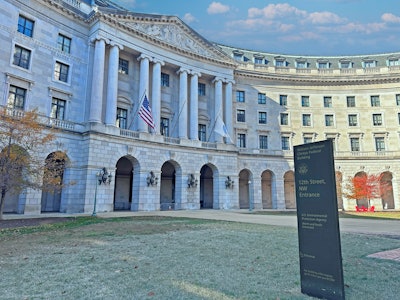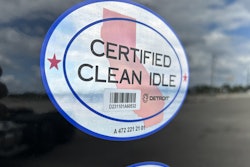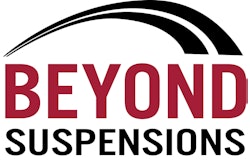
With the Environmental Protection Agency’s (EPA) announcement last week that it seeks to forfeit its authority to set greenhouse gas (GHG) regulations — not only canceling its Phase 3 rule before implementation but also trashing its prior rules — it’s safe to say trucking’s plea toward President Donald J. Trump’s administration to reconsider the influence of regulations on the industry was heard.
Congress used its powers under the Congressional Review Act to enable Trump to revoke waivers granted to California for its emissions regulations in June, and during last week’s announcement at Palmer Trucks’ Kenworth of Indianapolis – East location, EPA Administrator Lee Zeldin said the agency is now working to revoke the Endangerment Finding that allowed administrations to set GHG regulations since 2009.
Scrapping the agency’s scheduled and established GHG rules won’t reverse the air quality direction the industry has traveled in 16 years, nor will it eliminate SCR, DEF, aftertreatment systems and (current and future) NOx regulations regulated under the Clean Air Act.
[RELATED: CARB to allow ZEV credit transfers across states, classes]
Experts say it is unlikely to impact new truck sales either.
The pre-buy isn’t happening because the freight market is terrible; not because of any zero-emission vehicle (ZEV) sales mandates that loomed in the years ahead.
“We see almost no impact on truck orders due to eliminating the GHG regulations,” says Avery Vise, vice president of trucking at FTR. “Because EPA regulations govern the manufacturers and marketers of equipment and not the purchasers, we don’t see that the regulations really make much difference. This is especially true for Class 8 trucks where the mandates are smaller and don’t take effect for several years.”
ACT Research has a similar analysis.
Research Analyst Lydia Vieth says the EPA’s 2022 Heavy Duty NOx rule was always going to be the impetus for a pre-buy this year if one had occurred because that regulation (and California’s low NOx Omnibus rule) is why manufacturers are introducing preheaters into aftertreatment systems for their model year 2027 engines.
The Phase 3 regulations loomed large because, if implemented, they would have eventually required manufacturers to sell medium- and heavy-duty ZEVs, but sales requirements in the sleeper market weren’t set to kick in until 2030.
Removing the regulations this year might be a relief for manufacturers and their research and development teams, but it’s unlikely to move the needle in a dealer’s sales department.
“If [Phase 3] was to continue to exist, it could have led to credits issues down the line, but not right now,” says Vieth. “The NOx rule was the only thing that was ever going to affect sales in one year or another ahead of 2027.”
And pitching the NOx rule appears a much taller task for the Trump administration than Phase 3.
[RELATED: Aftertreatment systems are here to stay]
While the EPA’s GHG regulations have been strongly opposed by many business and transportation groups since their inception, emission standards (such as the ones that regulate NOx and diesel particulate matter) exist under the Clean Air Act and have evolved steadily for decades. Manufacturer development under these regulations have created not only cleaner but more fuel efficient vehicles, and aftertreatment systems — once the bane of many fleet maintenance managers’ existences — have been normalized into the operation of modern commercial trucks.
ACT Research Vice President Ann Rundle says if a pre-buy materialized this year, it’s possible some purchasers would have cited a desire to avoid the new aftertreatment technology (ahead of cost) as a primary reason for pulling ahead their orders. But she believes those carriers would have only been avoiding the technology for a short time while it became established. She says truck owners truly adverse to aftertreatment technology don’t buy new trucks, anyway.
That said, amending the NOx rule to reduce extended warranty requirements for the new technology would lessen the financial burden for carriers whose trade cycles are up or are eager to add capacity in 2027. And it likely would be supported by trucking associations.
But scrapping the rule entirely wouldn’t stop the new engines from being released, nor would it stop carriers who want new trucks from buying them.
As Vice puts it, “By all accounts, because the OEMs have already invested considerable sums and resources into 2027-compliant engines — some of which are already being certified — they plan to move forward with them and will build that investment into the cost.”
Which means the biggest driver of truck orders in the next 12 to 24 months will be freight, not regulation.
“FTR currently does not expect any significant upturn in the truck freight market until well into next year, although uncertainty is still high,” says Vise. “If our forecasts are correct, we would not expect many fleets to be able to buy much equipment in 2026 — whether or not the NOx rule is in place. Also, retail inventories of new trucks are quite high, so we would expect that supply to be exhausted before fleets rush out to buy more expensive new trucks.”
ACT’s duo has a similar assessment. Rundle quotes ACT President and Senior Analyst Kenny Vieth who says, “when truckers have money, they buy trucks,” but says today’s freight rates and tonnage levels mean most carriers don’t have that liberty. She says ACT pulled the pre-buy from its forecast once tariff uncertainty became the default economic setting and hasn’t wavered. Lydia Vieth adds clarity around tariffs could help turnaround the order swoon the industry is experiencing but a pre-buy is no longer realistic.
“The NOx rule could have had an impact right now [on orders] if not for the economic situation we find ourselves in,” she says.











